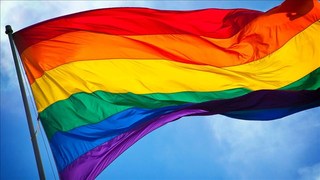 | Back to e-WV
| Back to e-WV
 The West Virginia Encyclopedia
The West Virginia Encyclopedia
 | Back to e-WV
| Back to e-WV
 The West Virginia Encyclopedia
The West Virginia Encyclopedia

For many years, bars were the only accepting place for the lesbian, gay, bisexual and transgender community to gather, and a number of gay bars existed in West Virginia as early as the 1940s. The Shamrock in Bluefield, owned by Helen Compton, is believed to be the oldest. In Charleston, the Tap Room below the Quarrier Diner opened in 1947, and the Chateau, later re-named the Driftwood, was a long-standing bar in Huntington. Drag shows also played an important early role in the entertainment scene.
In the 1970s and 1980s gay and lesbian support groups, such as one offered by the Reverend Jim Lewis at St. John’s Episcopal Church in Charleston, began to appear in larger cities. College campuses in Huntington, Morgantown, and Wheeling also became places where gay and lesbian students found support. The Lambda Society on Marshall University’s campus was vibrant by 1981, and records show it existed in the 1970s, as well.
Gays seeking civil rights and recognition became more politically active in the 1990s. In 1991, the West Virginia Coalition for Gay and Lesbian Rights formed, and in 1993, the organization introduced the first amendments to add sexual orientation to hate crime laws and the West Virginia Human Rights Act, although they failed to pass. That year, the first Lesbian and Gay Pride march was held on Marshall University’s campus. In 1993, the weeklong celebration at Marshall was met with a counterprotest covered by CNN that prompted a California woman to donate $10,000 to support gay and lesbian issues on Marshall’s campus. The same year, Huntington native Julia Hagan became the first West Virginia representative of the support group, Parents, Families and Friends of Lesbians and Gays, which now has other active members across the state.
The first statewide Gay Pride Parade, held in Charleston in 1996, ended with draping the Rainbow Flag on the Capitol steps. The parade continues today through the efforts of Rainbow Pride of West Virginia, originally founded in 1997 as West Virginia Pride. Fairness West Virginia, a separate nonprofit organization, founded in 2008, works for the rights and protection of members of the lesbian, gay and transgender community.
A significant breakthrough for West Virginia gays and lesbians came on October 9, 2014, when same-sex marriage was effectively legalized in the state. On that date, Gov. Earl Ray Tomblin and Attorney General Patrick Morrisey announced that state agencies would no longer enforce previous bans on gay marriage. They acted in response to actions by the U.S. Supreme Court, which had recently refused to hear appeals of lower court rulings outlawing bans on gay marriage in other states. County clerks were instructed to begin issuing marriage licenses to same-sex couples right away, and couples began receiving licenses on the afternoon of October 9.
Written by Carter T. Seaton